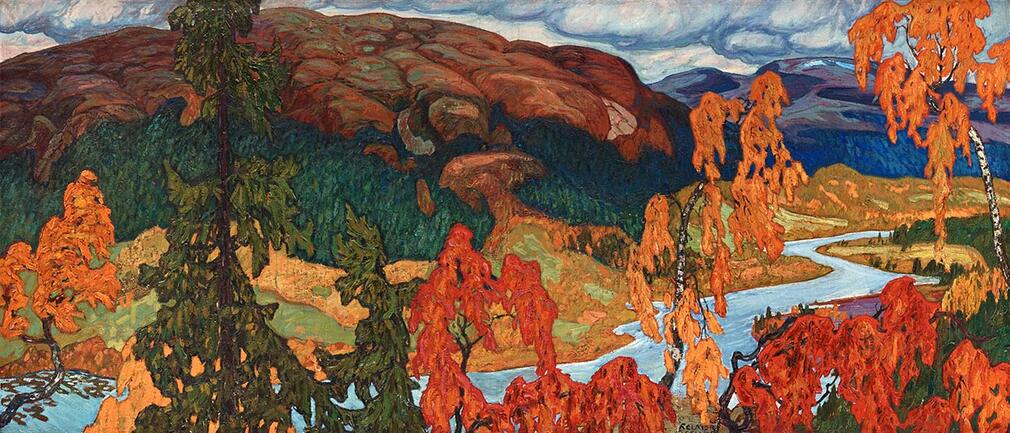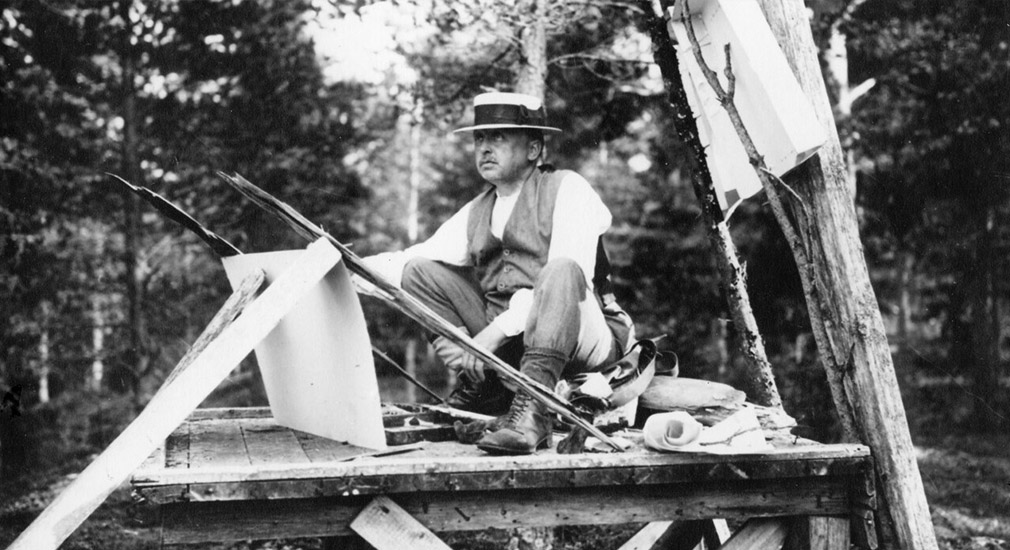Bukowskis presents ”Mullfjället” by Helmer Osslund

Helmer Osslund has, for reasons that are clear to see, been called “the artistic pioneer of Norrland”.
Yet such a description, however warranted it may be, must be considered in the context of Osslund’s knowledge of tendencies in international art. Through his travels, and times spent living in America as well as Europe Osslund acquired a perspective that reached far beyond the northernmost landscapes of Sweden, beyond the ‘Lapponian Gate’ or the High Coast area. Via Copenhagen and Berlin, Osslund arrived in Paris in the spring of 1894. After his studies at Academie Colarossi, which had to be abandoned due to lack of funds, Osslund learned by regularly visiting museums, art shops and studios.
One of the artists that caught Osslund’s eye was Paul Gauguin. Nils Palmgren describes in his book Helmer Osslund (1937) the impression that Gauguin’s painting made: “There was this sophisticated, resoundingly unique and dynamic colourist, there were whole surfaces, yet compositions were superbly negotiated into gem-like wholes, and finally there was an extraordinary insight and a worship of beauty that was interweaved with mysticism, all elements that highly appealed to Osslund”.
And later when Osslund became the French master’s student, Gauguin also showed an interest in his work, complimenting its sense of colour and artistic understanding. Like Gauguin Osslund is a transitional artist. His work represents, at the same time, both the end of a particular period in European visual arts and the beginning of another. In his paintings Naturalism and Impressionism (where the aim is to conquer the fullness of reality) grapple with an emerging Expressionism where the goal is to abandon reality and replace it with the personal and the I.
This development is skilfully illustrated in Mullfjället, höstlandskap från Jämtland (Mullfjället, Autumn Landscape from Jämtland). Osslund has, in this inspiring composition now offered for sale, masterfully immortalised his artistic vision of the ‘Jämtlandian’ mountain landscape’s breathtaking display of autumnal colours. The view, with its powerful colouring and synthetic imagery, is a magnificent example of Osslund’s Gauguin-inspired painting style – and exceptionally harmonious in its form. The clouds in this piece are of particular note as they embody Osslund’s notion that “The sky must be as heavy, as saturated with colour as the ground”.
Photo: Helmer Osslund, Umeå universitetsbibliotek
To the artwork >
The work ”Mullfjället” will be sold at this spring's auction of Important Spring Sale 3–4 June.































